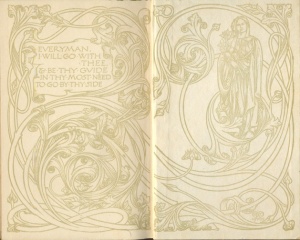Since 2010, there have been rumors circulating that Nicholas Sparks compared himself to–or even put himself above–Jane Austen in literary talents. I am here to tell you that, regardless of what the man may or may not have said, this comparison/put-down to Miss Austen is completely unfounded.
In a similar way, many people only think of Jane Austen as some other dead author, someone whose works hold no interest for our generation. I know this, because–as an early-blooming Jane Austen addict–I was the recipient of tons of odd looks. “What are you reading,” they’d say. “No one reads those books anymore!”
Well, that is simply not true. And this collection can prove it.
Jane Austen’s work is, admittedly, around 200 years old, but it is still loved by readers today…readers like me. The only problem for those of us who love these books is that the author has long since passed, along with any chances of more novels being written by her. As Kathryn Sutherland states, “Austen died aged 41 at the height of her powers.” That is our problem. There is a demand, but no supply. What are we to do?
Luckily, some Austenites take their passion for these books one step further than the rest of us. While we cannot bring Jane back to give us new books, ends to the unfinished manuscripts, or sequels to the existing stories, these wonderful people at least try to bridge the gap between our desperate demand and the never-to-be-had supply… They give us spin-offs.
By definition, a spin-off novel is a book “that is imitative or derivative of an earlier work” … So in the case of this collection, a Jane Austen spin-off is a book that is either a continuation or variation of one of Jane’s works, whether it be one of the completed novels or unfinished manuscripts. And in the case of Jane’s fans (like me) who can’t get enough of her novels, spin-offs are a blessing.
Now, feel free to browse through the beginnings of a great collection. While there are only twenty or so books on this list, hundreds more are out there to find and enjoy. There are even a few movies.
THE COLLECTION:
Austen, Jane. Pride and Prejudice. New York: Knopf, 1991.
Price: $20.00
Austen, Jane. Emma. New York: Knopf, 1991.
Price: $20.00
Austen, Jane. Mansfield Park. New York: Knopf, 1992.
Price: $26.00
Austen, Jane. Northanger Abbey. New York: Knopf, 1992.
Price: $20.00
Austen, Jane. Persuasion. New York: Knopf, 1992.
Price: $19.00
Austen, Jane. Sense and Sensibility. New York: Knopf, 1992.
Price: $20.00
Austen, Jane. Sandition and Other Stories. New York: Knopf, 1996.
Price: $22.00
Aidan, Pamela. An Assembly Such as This. New York: Touchstone Book, 2006. Print.
Price: $13.52
Aidan, Pamela. Duty and Desire. New York: Touchstone, 2006. Print.
Price: $13.52
Aidan, Pamela. These Three Remain. New York: Touchstone/Simon & Schuster, 2007. Print.
Price: $15.38
Reynolds, Abigail, and Jane Austen. The Last Man in the World. Madison, WI: Intertidal, 2006. Print.
Price: $14.48

































